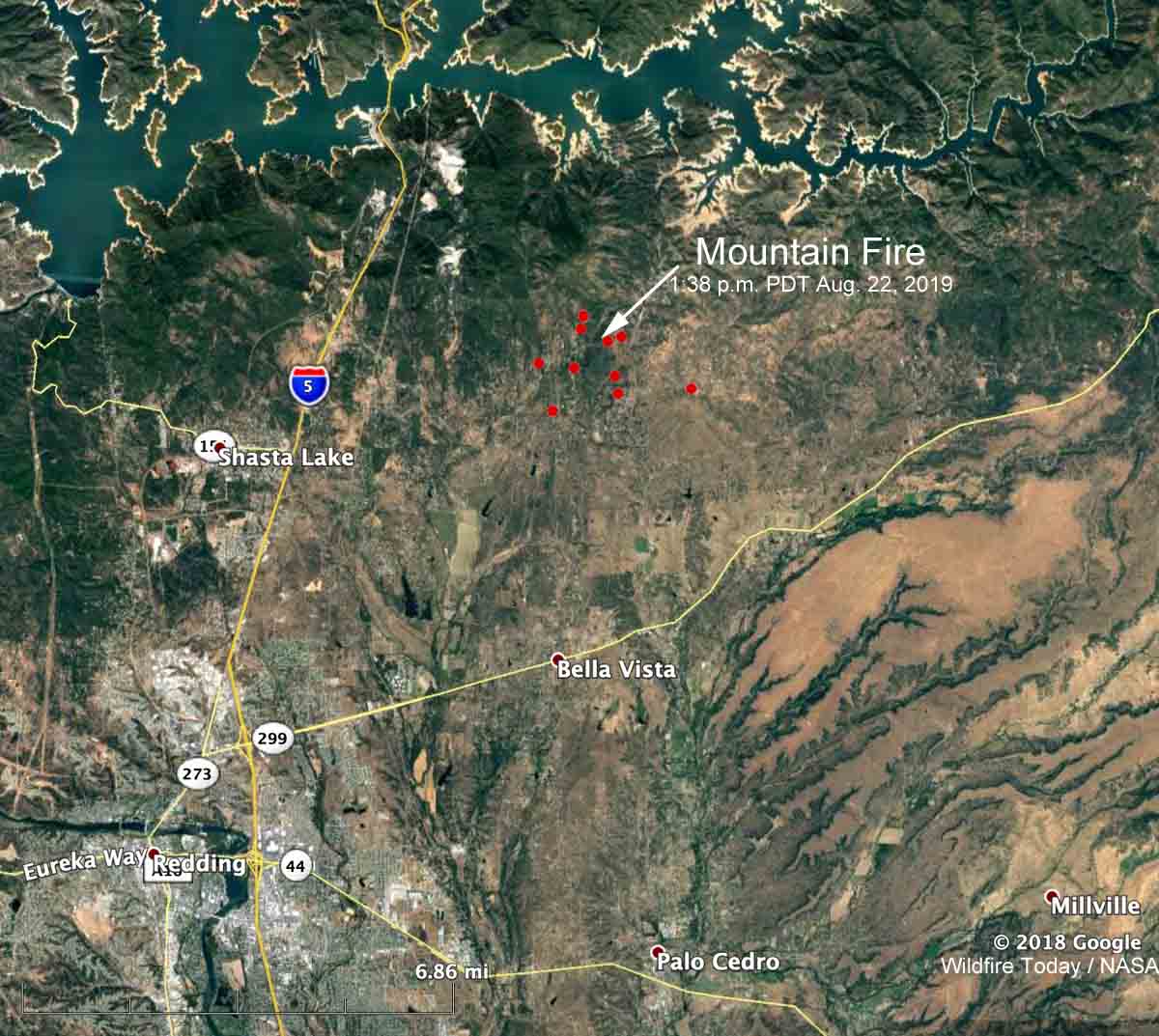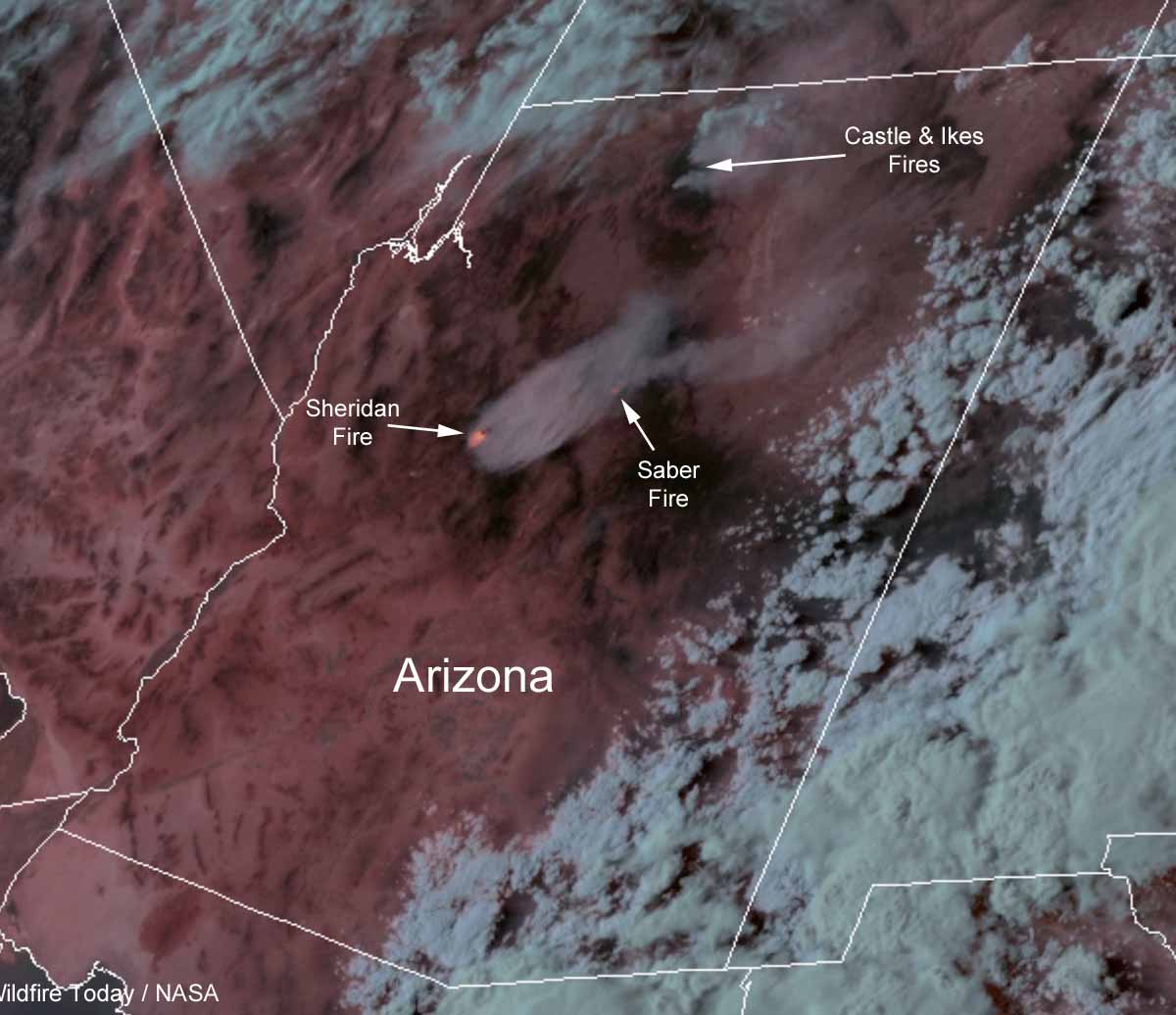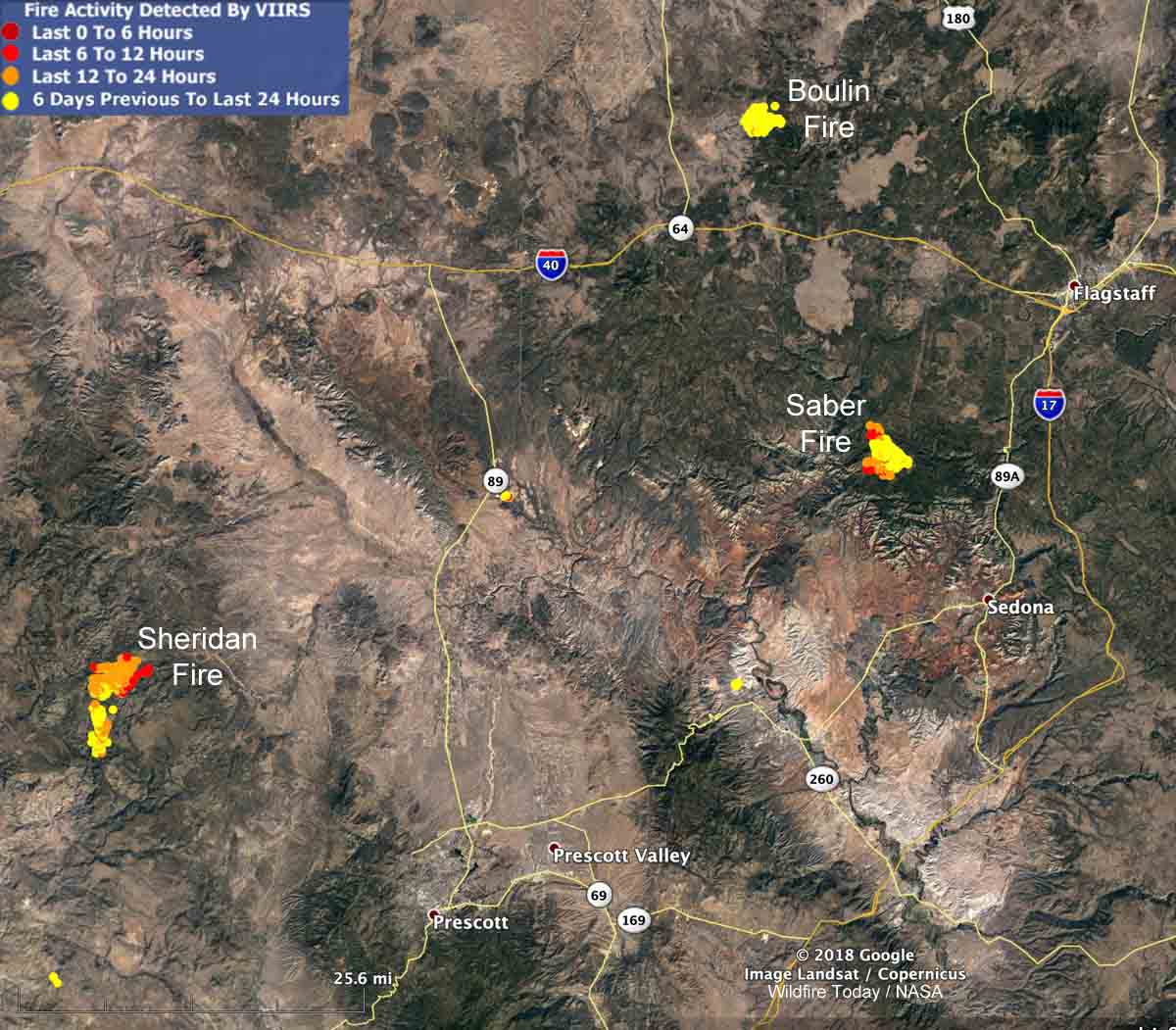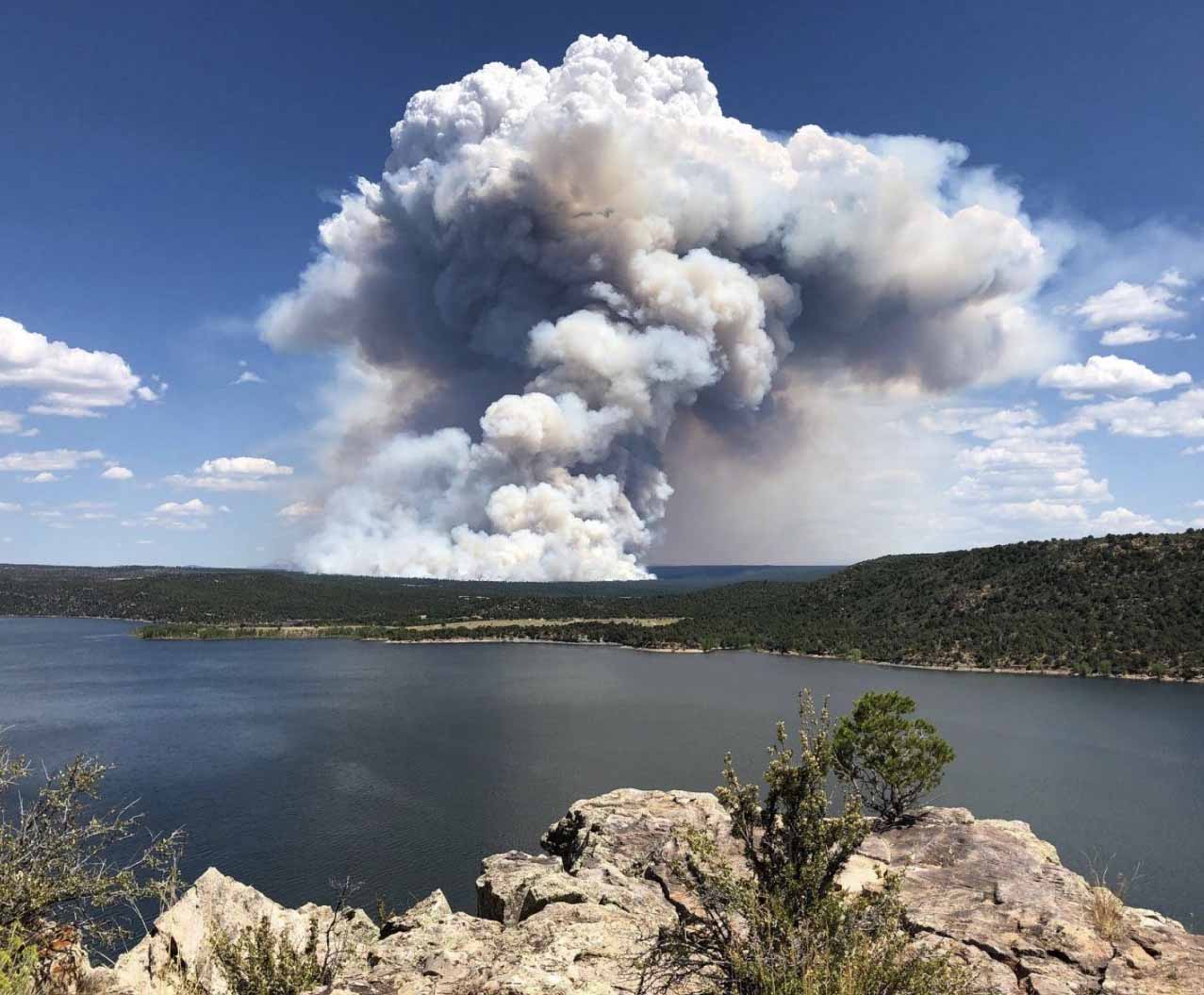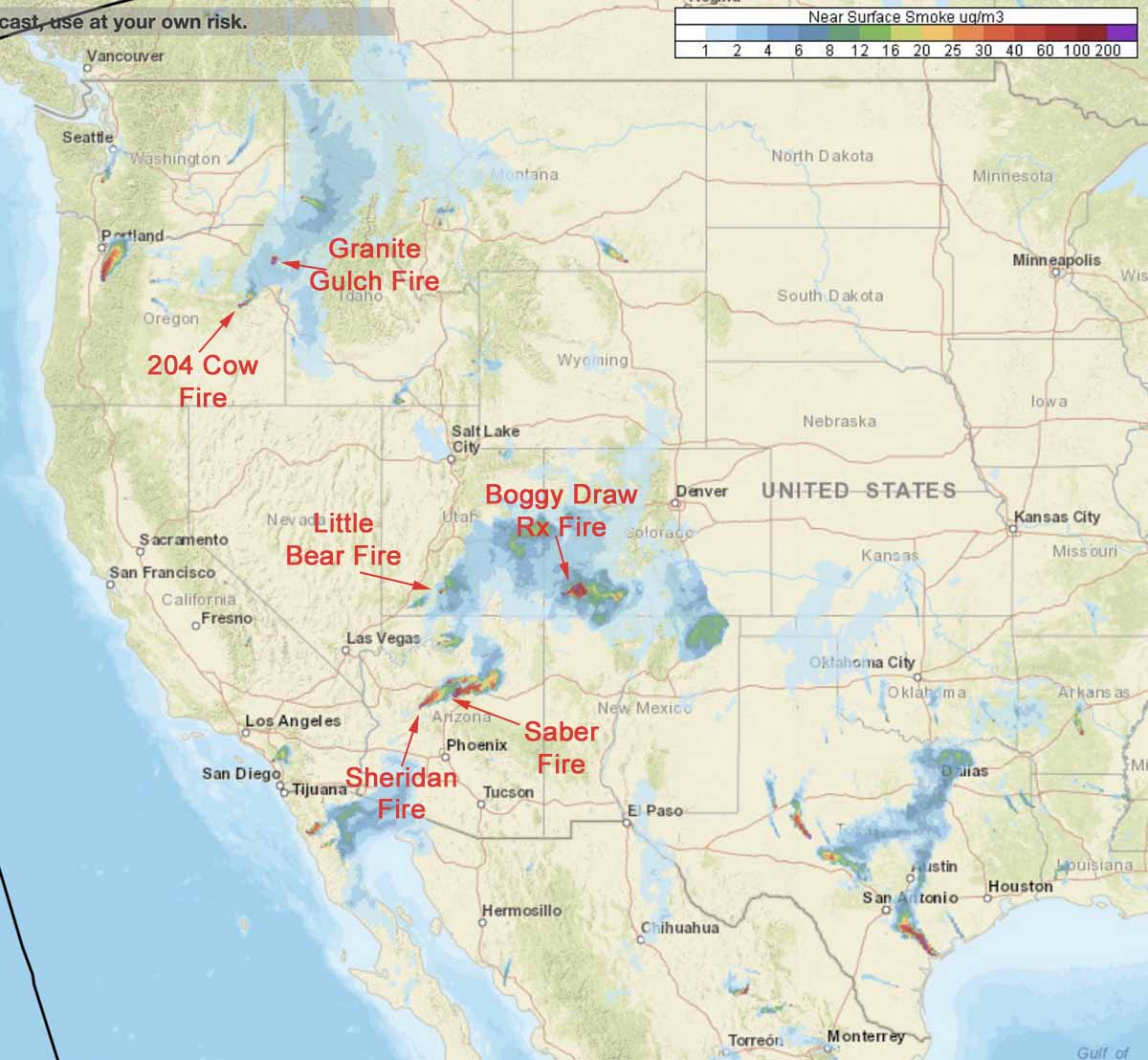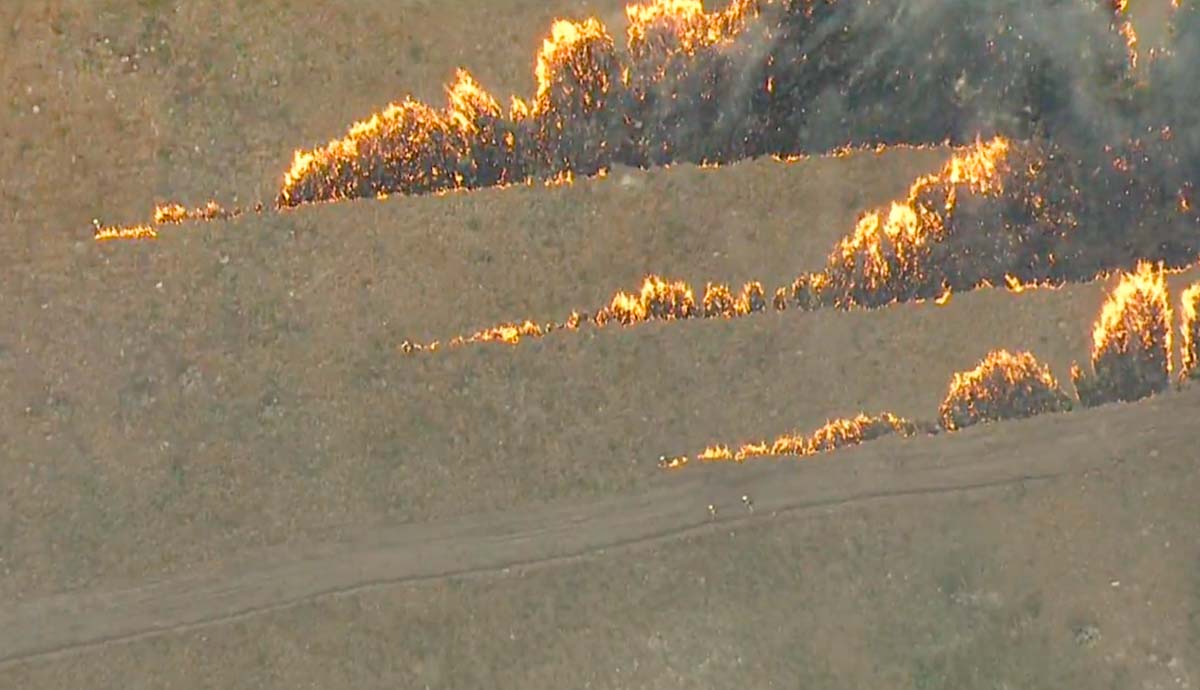
The Goose Point Fire grew quickly when it started late Wednesday afternoon on West Mountain 11 miles southwest of Provo, Utah. After it burned through the night, firefighters on Thursday worked with dozers to fight fire with fire — burning the fuel between dozer lines and the main fire. At 11:00 a.m. Thursday firefighters using GPS equipment mapped it at 6,451 acres and soon thereafter stopped the spread.
The preliminary cause is machinery that was operating in the area, according to Dave Vickers, an area fire management officer with the Utah Division of Forestry, Fire and State Lands.
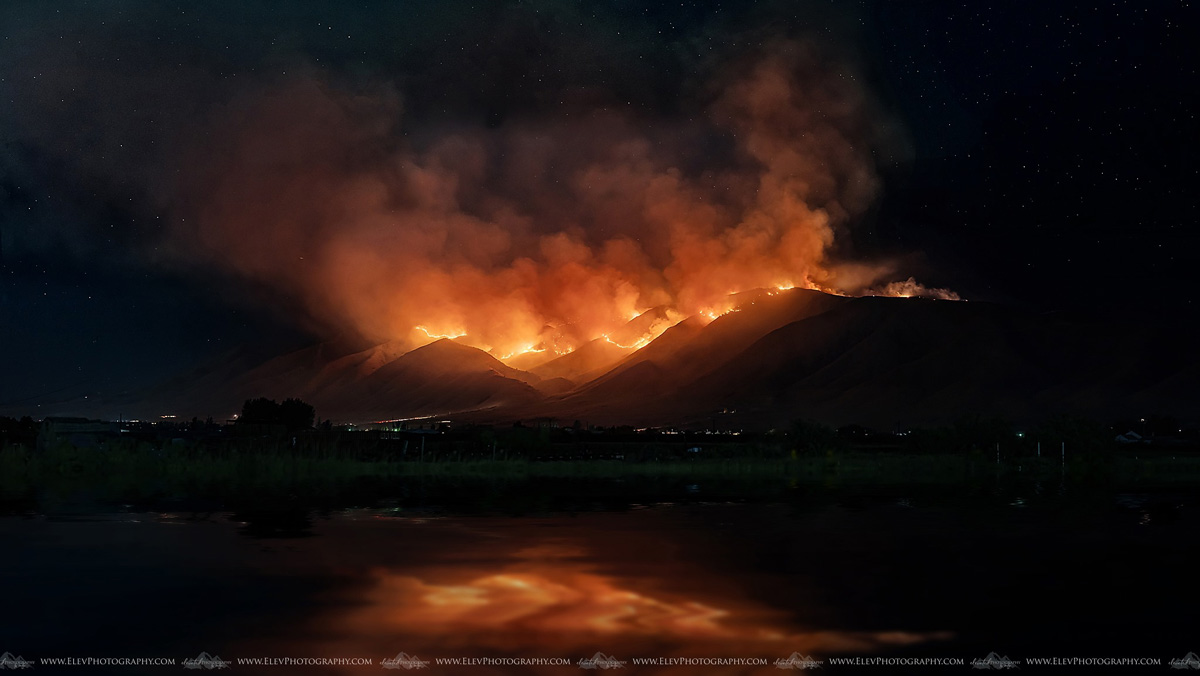
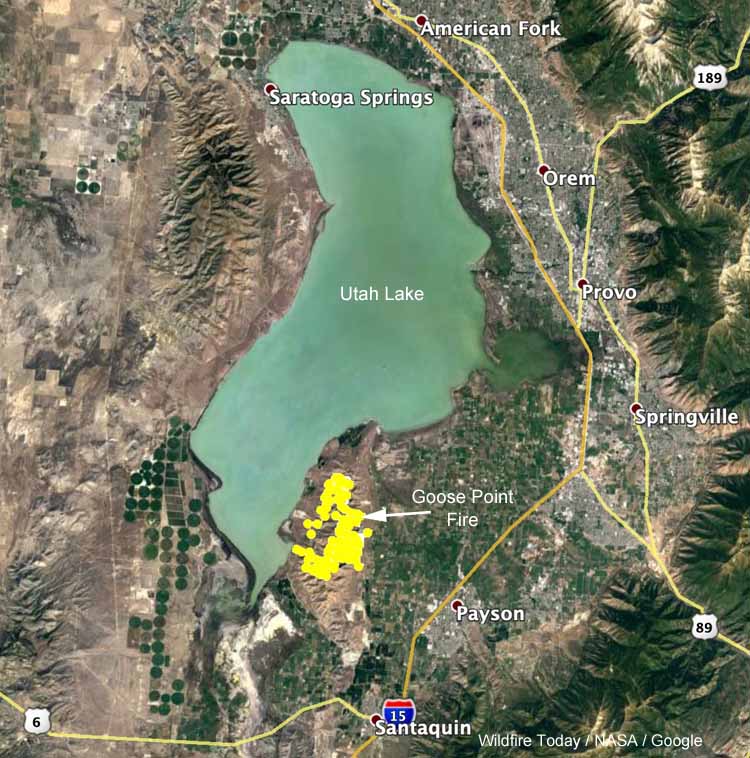
The KSL 5 TV video footage below has some excellent shots of the Goose Point Fire.

